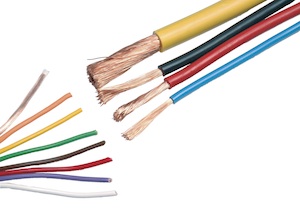Cable Management: What He Said
 One of the things I look forward to the most is reading rAVe [Publications] columnist LeeDistad’s articles. I know each time I will learn something new about AV, customer relations and always walk away with a smile and chuckle for how witty he is in delivering great information.
One of the things I look forward to the most is reading rAVe [Publications] columnist LeeDistad’s articles. I know each time I will learn something new about AV, customer relations and always walk away with a smile and chuckle for how witty he is in delivering great information.
I wanted to follow-up on his most recent article about the Best Practices of Cable Management because 1) he is so right on and 2) it can’t be said enough. Also, I think it’s critical we include this scope of work in the design and construction phase of projects to be able to implement what Lee outlines. They’re critical steps that AV systems integrators/installers need to adopt consistently in the field to raise the bar.
Read Lee’s column to find out why you need to:
- Bring enough cable
- Run data lines away from power
- Don’t exceed cable tolerance
- Label early, often
Sage advice indeed. But, I wanted to add to his points about what our AV consultants and architects need to do in the planning process to help AV systems integrators be able to accomplish a properly designed experience.
Plan for Furniture Cable Management: It’s critical in the D&C process to coordinate and have frequent communications with the furniture planner to ensure they are considering that AV (mics and media sources) all have cables that need to cleanly and flexibly function within their tables, podiums, etc. How many times have you seen a beautiful table with no thought given to cable management trays that easily adjust for reconfiguring a space and the length of cable needed to accommodate changes? This is even more important when considering the placement of floor boxes and how they will support current and future potential requirements.
Separate Your Cables By Color: Lee’s graphic is poignant in what is a huge requirement we need to recognize — we need to understand there are multiple colors we should use for the same type of cabling depending on the application. With the convergence of AV and IT and the drive to structured cabling, we need to be able to easily differentiate our AV cable from a IT/BAS/security cable in patch panels. Using a color-coded system for each low-voltage technology will help all professionals know which cables/ports they can plug into that won’t take down an entire building control system. (And, why do installers NOT have a concern about what they may be disconnecting to get a live jack anyway?)
Document/Label EVERYTHING: Lee makes the excellent point that as systems integrators, you need to label your wires/components. I think this separates the “amateurs” from the “professionals.” Not only should we expect that there is a fully accurate and comprehensive database of each IP address, physical location and device that’s part of our AV system, but the end-user or any future service provider should be able to walk in and pick up a comprehensive set of documentation that makes troubleshooting a system easy. And, how do you do that? As Lee said, it’s all about making sure you have the proper labels on your wires and devices that people can refer to.
We all know a system is built to be in place for a lifecycle. But, if we don’t consider upfront what is going to make that lifecycle manageable, put it in our requirements, and hold ourselves to the highest levels — we and the very systems we design will fail. Because, it’s easy (for the purposes of this post) to design a system that will work on day one, but are we considering and thinking enough in the future and including in the planning stages what our operations and maintenance needs are to ensure a system performs to its specifications and is easily manageable? And, how about outperforming ourselves, now that’s a noble endeavor…
Thanks for your article, Lee. Purple is my favorite color if there’s a vote in our industry to standardize for our cable type.


